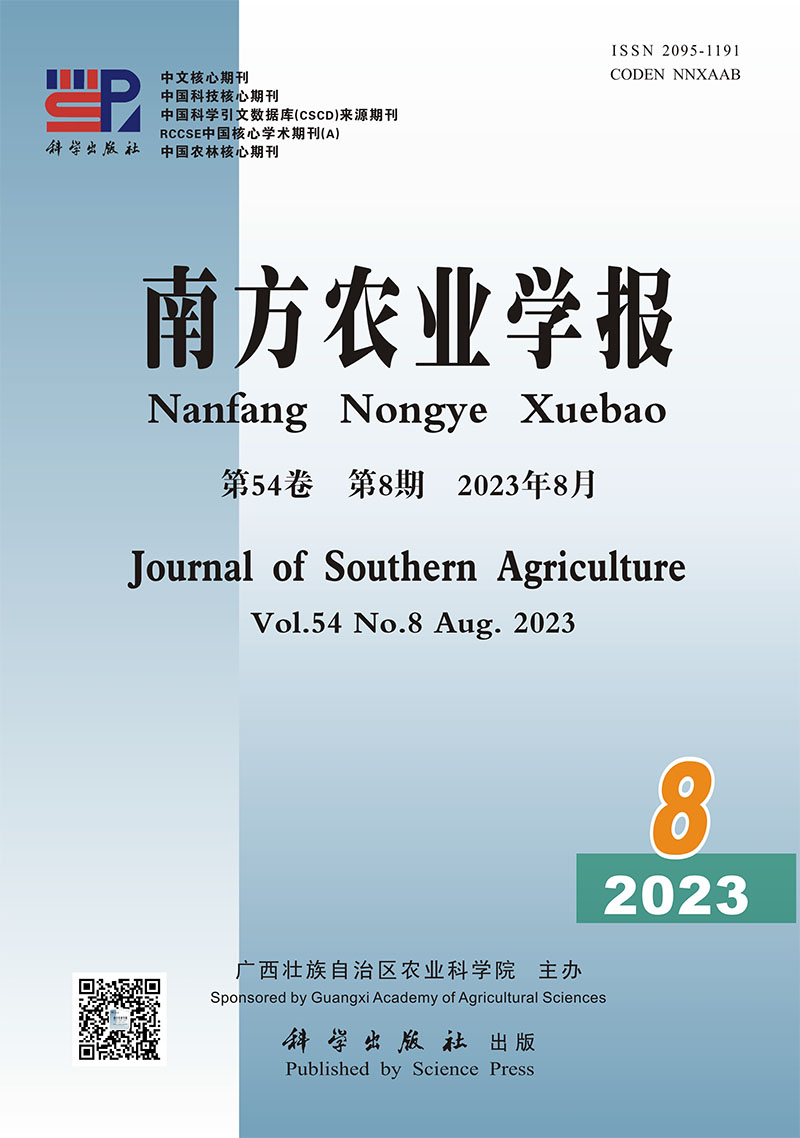Characteristics and evaluation of mercury pollution in paddy soil of a watershed in Zhanjiang
引用次数: 0
Abstract
[Objective] The potential risk of mercury in paddy soil of a watershed in Zhanjiang were investigated to provide reference for reasonable planting of farmland and ensuring the safety production of agricultural products. [Method] The mercury content in 42 soil samples of paddyfield in the upper, middle and lower reaches of the study area was determined, mainly through using the single-factor index, geo-accumulation index and potential ecological risk index. Also, the spatial distribution characteristics of mercurypollution probability were analyzed by Indicator Kriging method. [Result] The mercury content of paddy soil of a watershed in Zhanjiang ranged from 0.040 to 0.504 mg/kg, and the coefficient of variation was 68.42%, which belonged to the middle degree of variation. The average value of mercury content in the study was 0.193 mg/kg, which was generally shown as middle reaches>upper reaches>lower reaches. The average value of middle reaches was 0.343 mg/kg, which was the highest in the whole watershed. Although it did not exceed the national screening value of 0.5 mg/kg of agricultural soil pollution risk, it was as 4.3 times as the mercury content of the background value of Zhanjiang soil (0.045 mg/kg), and far higher than the background value of soil in Zhanjiang. The mercury pollution in the paddy soil of the whole watershed was obvious. The results of single factor index evaluation based on the background value of soil in Zhanjiang showed that the site of heavy accumulation of mercury in paddy soil is as high as 52.38%. The results of land accumulation index analysis showed that 33.33% of the samples belonged to medium to strong pollution. The average value of the potential ecological risk index of mercury in the whole basin was 160–320, and the risk level was IV, which was a very strong potential ecological risk. The results of Indicator Kriging method showed that, there was a high probability of mercury pollution in paddy soil of the watershed, especially in the middle reaches. [Conclusion] The content of mercury in paddy soil in this study area of Zhanjiang belongs to the safe range, but there arepotential serious ecological risks. Attention should be paid to mercury pollution in paddy soil, which is caused by the extensive use of pesticides and chemical fertilizers and automobile exhaust. 摘要: 【目的】 开展湛江某流域水稻田土壤汞污染调査, 为流域农田合理种植及农产品安全生产提供参考依据。 【方法】 测定研究区上、中、下游水稻田共42份土壤的汞元素含量, 综合采用单因子指数法、地累积指数法及潜在生态 风险指数法进行污染评价, 并结合指示克里格法分析汞污染概率的空间分布特征。 【结果】湛江某流域水稻田土壤汞 元素含量范围为0.040~0.504 mg/kg, 变异系数为68.42%, 属中等变异程度; 土壤汞含量平均值为0.193 mg/kg, 总体上 表现为中游>上游>下游, 其中中游平均值为0.343 mg/kg, 为全流域最高。总体上虽未超过国家农用地土壤污染风险 筛选值(0.5 mg/kg)但远高于湛江土壤背景值(0.045 mg/kg), 汞含量平均值是湛江土壤背景值的4.3倍。整个流域 水稻田土壤中汞污染较明显, 基于湛江土壤背景值的单因子指数评价结果表明, 水稻田土壤中汞出现重度累积的样 点高达52.38%; 地累积指数分析结果显示33.33%的样点为中污染至强污染; 整个流域水稻田土壤的汞元素潜在生态 风险指数平均值在160~320范围内, 风险等级为IV级, 属于很强潜在生态风险。指示克里格法分析结果显示该流域 水稻田土壤中具有较高汞污染概率, 尤其是中游流域污染情况较突出。 【结论】湛江该流域水稻田土壤汞含量属于安 全范围, 但存在很强的潜在生态风险。农药化肥的大量使用及汽车尾气排放可能导致水稻田土壤汞污染的问题应引 起重视。湛江某流域水稻土汞污染特征及评价
[目的]调查湛江某流域水稻土中汞的潜在风险,为合理种植农田、保障农产品安全生产提供参考。[方法]对研究区上、中、下游稻田42个土壤样品进行汞含量测定,主要采用单因素指数、地质累积指数和潜在生态风险指数。采用指标克里格法分析了汞污染概率的空间分布特征。[结果]湛江某流域水稻土汞含量在0.040 ~ 0.504 mg/kg之间,变异系数为68.42%,属于中等变异程度。研究区汞含量平均值为0.193 mg/kg,总体表现为中游>上游>下游。中游的平均值为0.343 mg/kg,在整个流域中最高。虽然没有超过国家筛选值0.5 mg/kg的农业土壤污染风险,但却是湛江土壤汞含量背景值(0.045 mg/kg)的4.3倍,远高于湛江土壤背景值。整个流域水稻土汞污染明显。基于土壤背景值的单因素指标评价结果显示,湛江市水稻土汞重富集位点高达52.38%。土地积累指数分析结果显示,33.33%的样本属于中、重度污染。全流域汞潜在生态风险指数平均值为160 ~ 320,风险等级为IV级,属于非常强的潜在生态风险。指标克里格法结果表明,该流域水稻土存在汞污染的可能性较大,尤其是中游地区。[结论]湛江研究区水稻土汞含量属于安全范围,但存在潜在的严重生态风险。应注意水稻土中的汞污染,这是由于农药和化肥的广泛使用以及汽车尾气造成的。摘要: 【目的】 开展湛江某流域水稻田土壤汞污染调査, 为流域农田合理种植及农产品安全生产提供参考依据。 【方法】 测定研究区上、中、下游水稻田共42份土壤的汞元素含量, 综合采用单因子指数法、地累积指数法及潜在生态 风险指数法进行污染评价, 并结合指示克里格法分析汞污染概率的空间分布特征。 【结果】湛江某流域水稻田土壤汞元素含量范围为0.040 ~ 0.504毫克/公斤,变异系数为68.42%,属中等变异程度;土壤汞含量平均值为0.193毫克/公斤,总体上表现为中游>上游>下游,其中中游平均值为0.343毫克/公斤,为全流域最高。总体上虽未超过国家农用地土壤污染风险筛选值(0.5毫克/公斤)但远高于湛江土壤背景值(0.045毫克/公斤),汞含量平均值是湛江土壤背景值的4.3倍。整个流域水稻田土壤中汞污染较明显,基于湛江土壤背景值的单因子指数评价结果表明,水稻田土壤中汞出现重度累积的样点高达52.38%;【中文译文】整个流域水稻田土壤的汞元素潜在生态风险指数平均值在160 ~ 320范围内,风险等级为IV级,属于很强潜在生态风险。指示克里格法分析结果显示该流域 水稻田土壤中具有较高汞污染概率, 尤其是中游流域污染情况较突出。 【结论】湛江该流域水稻田土壤汞含量属于安 全范围, 但存在很强的潜在生态风险。农药化肥的大量使用及汽车尾气排放可能导致水稻田土壤汞污染的问题应引 起重视。
本文章由计算机程序翻译,如有差异,请以英文原文为准。
求助全文
约1分钟内获得全文
求助全文

 求助内容:
求助内容: 应助结果提醒方式:
应助结果提醒方式:


